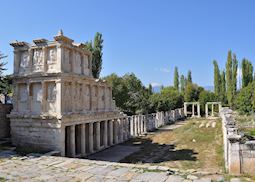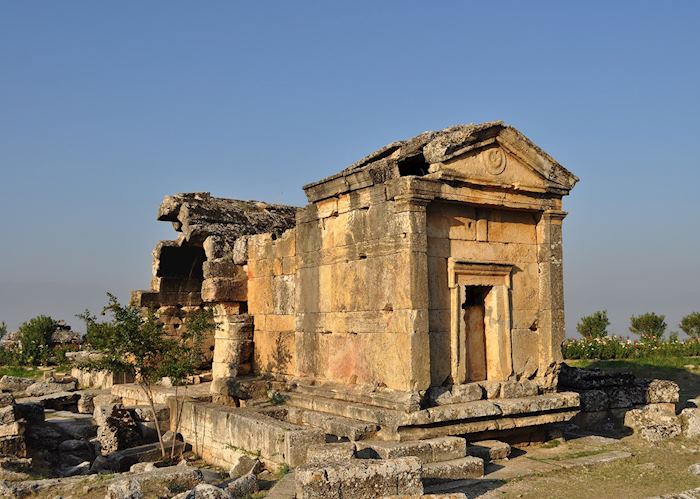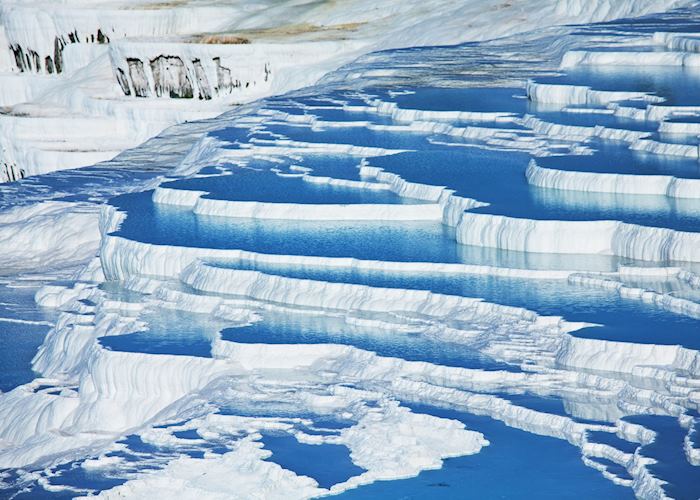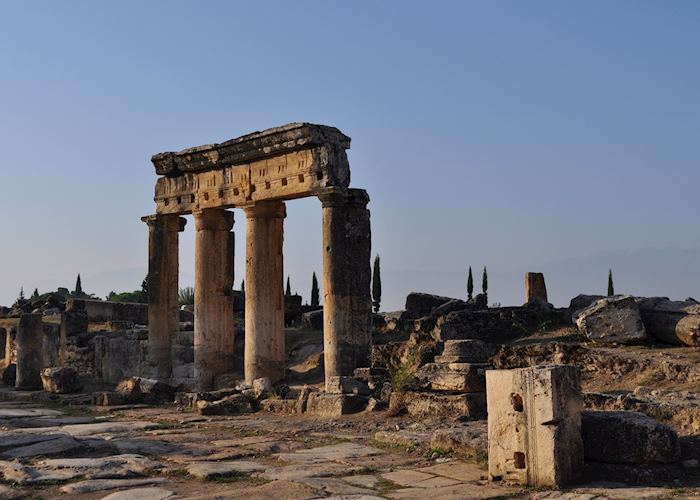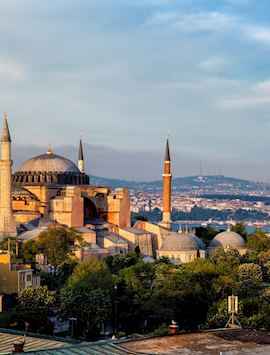The limestone travertines of Pamukkale, or 'cotton castles' as the name means in Turkish, form a series of striking white terraced basins cascading down the hillside. The travertines have been created over time by hot springs and streams depositing carbonate minerals at various levels down the hillside.
Although sadly the springs no longer run naturally through the terraces, the local authorities fill certain sections at a time with water, to show what the area would have looked like in its prime. It's a beautiful sight, especially now tourists are not allowed to wander freely amid the terraces and must stick to a designated path.
At the top of the travertines is a fairly sizeable swimming pool complex centered around the 'Antique Pool', which is a section of submerged city beneath the hot springs.
In around 190 BC Hierapolis sprang up as a thermal spa settlement to cater for the visitors to the ever-popular Pamukkale hot springs. Today, the ruins are some of the most interesting to explore, in part because of the mountainous backdrop, but also the fascinating and very well-preserved ancient necropolis (cemetery), housing many of the aged and ill visitors who came to Hierapolis to feel the benefits of the thermal waters.
Hierapolis is also home to a large Roman theater, which overlooks the valley below. The town flourished even through the influx of Christianity in the 4th century when various structures were converted for more Christian uses, until finally in the 7th century it was destroyed first by invading Persians and then by a large earthquake.
